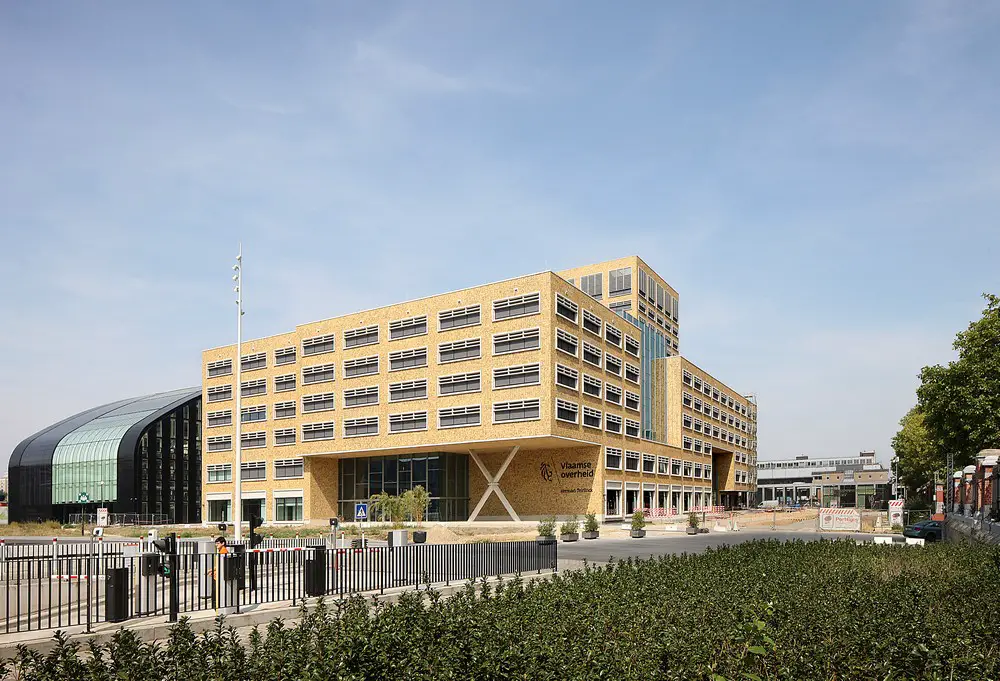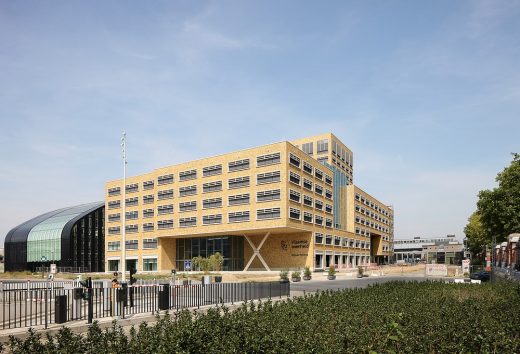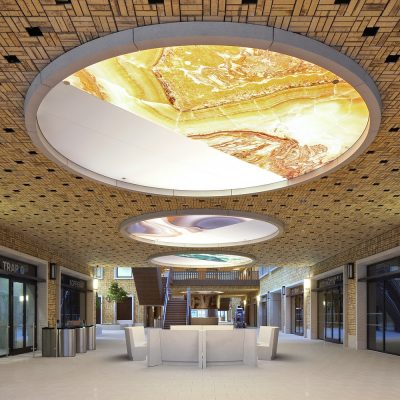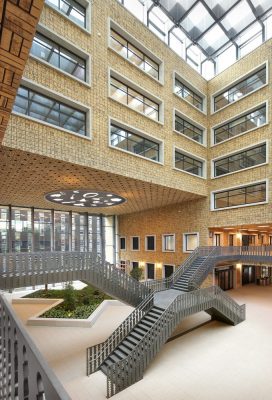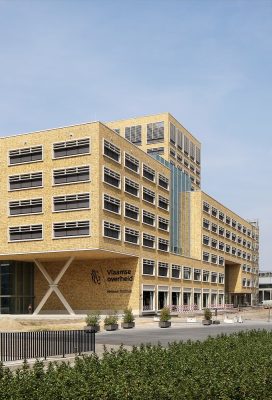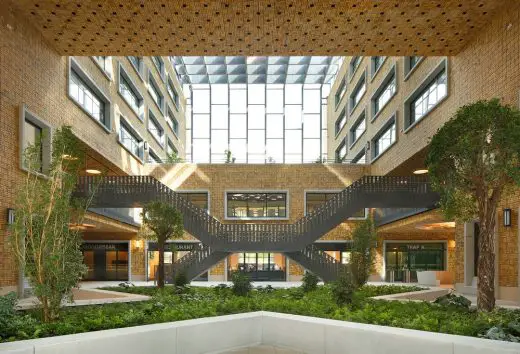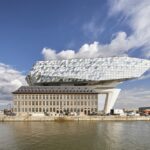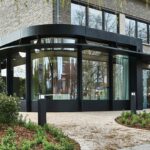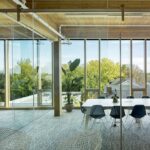The Herman Teirlinck Building, Havenlaan Office, Brussels Commercial Architecture Images
The Herman Teirlinck Building in Brussels
Belgian Tour & Taxis Site Redevelopment Project design by Neutelings Riedijk Architects
25 Sep 2017
The Herman Teirlinck Building in Havenlaan, Brussels
Design: Neutelings Riedijk Architects
Location: Havenlaan, Brussels, Belgium
The Herman Teirlinck Building
Tour & Taxis: A New Green City District in the Centre of Brussels
The Herman Teirlinck building is located on the Havenlaan in Brussels, on the Tour & Taxis site. This historical site is characterised by monumental industrial buildings from the beginning of the last century, giving the new city district a characteristic appearance.
The Tour & Taxis site is one of the last large-scale development sites in the heart of Brussels and has been designated as one of the leverage areas within the metropolitan development vision. This ambitious urban project will grow into a new high-quality 30-acre urban area in the centre of Brussels. A nine-acre public park that connects Emile Bockstaellaan with the canal area forms the heart of the neighbourhood.
Opposite the Herman Teirlinck building is the Royal Warehouse, which has been redeveloped as a successful multifunctional building. Other historic buildings, such as the Sheds, the Hôtel de la Poste and the Hôtel des Douanes have also been redeveloped. The Gare Maritime, the gigantic historic freight station, is currently being renovated and converted into ‘a city where it never rains’ with 70,000 m2 of a mixed urban program to a design by Neutelings Riedijk Architects. There are also several city blocks with hundreds of apartments currently under development.
A Strategic Location for the Flemish Government
The lot for the Herman Teirlinck building on the Tour & Taxis site is prominently located along the Havenlaan and together with the Royal Entrepot it forms the entrance gate to the Tour & Taxis site. This strategic location and the specific architecture of the Herman Teirlinck building give the Flemish Government its own distinctive and recognisable presence in the centre of Brussels.
With this project, the Flemish Government aims to create a new sustainable urban society in practice, a choice that corresponds with its own ambitions and policy intentions. With the choice for Tour & Taxis, it sets a good example and chooses a sustainable urbanity, of human dimension and a healthy working environment for approximately 2600 Flemish government employees. The size and development potential of the Tour & Taxis site makes it possible for the Flemish Government to expand, in the immediate future, to existing or new buildings.
A Compact Low-Rise Building with an Attractive Working Environment
The design deliberately chooses for a low-rise building of six floors set around four green winter gardens. The building thus aligns with the existing heights of its surroundings and especially the roof height of the Royal Warehouse. The disadvantages of a classic office tower are the small floor fields and limited flexibility around the central core. The design of the Herman Teirlinck building, on the other hand, allows for large horizontal floor fields that are ideally suited for ‘Activity Based Working’. The project is therefore very compact and developed with human dimensions in mind. A modest height accent (60m) in the second line gives the project a recognizable character in the Brussels skyline.
A Varied Urban Volume
The Herman Teirlinck building has varied building volumes that blend into the urban blocks along the Havenlaan in a natural way. The building has a meandering shape, which divides the large volume into several wings of different depths and sizes. This creates organised floor fields of different sizes within which each department can be optimally accommodated.
An Indoor Street with Public Facilities
The Herman Teirlinck building has a covered public internal street, in analogy with the Royal Warehouse, which serves as the main access for the building. On the ground floor, alongside this freely accessible interior street, there are public services, such as a restaurant, cafeteria, auditoriums, reception rooms, exhibition space and sports facilities. On the first floor are meeting rooms set around the central balconies, which are accessible via the monumental stairs. On the interior street are two large courtyards, which can be used for all types of meetings. Thanks to the large atrium glass roofs, the interior street is richly provided with high light incidence.
A Vareiety of Gardens and Greenhouses
The office floors are situated, in the low-rise building, from the second to fifth floor around large greenhouses and in the tower on the thirteenth floor overlooking the city. The gardens are glazed and used as winter and summer gardens. This ensures optimum daylight monitoring and visualisation in the workplace. The four different gardens provide users with a unique workplace with its own identity within the larger building volume. The gardens offer a variety of views so that departments can interrelate. The pleasant atmosphere offered by the gardens can be utilised by the staff for informal work and meeting places. The gardens are also the green lungs of the building and function as a heat buffer.
A Bright and Flexible Building with Future Value
The Herman Teirlinck building has a clear, well-organised layout based on a 7.20 metre pattern. The office wings are 21 metres deep, with daylight positions along the external walls for workplaces and, in the main nave, areas for general facilities such as toilets, stairs, elevators, printing and coffee corners.
This provides a clear and flexible layout, with a lot of variation due to the meandering shape of the building. This means that the building can be used for different organisational forms in the future. The Herman Teirlinck building is completely customised for the Flemish Administration, both for the current program as for future changes.
A Very Sustainable Building
The Herman Teirlinck building has the highest degree of sustainability for an office building in accordance with the Flemish Government’s valuation manual. This is primarily due to the main compact shape: a deep building with a lot of natural light.
Secondly, this is due to the constructional measures, such as high insulation and airtightness, glass surface limitation, brick facades and recycled materials. Finally, the most sustainable and advanced technical installations are used for energy and climate control, such as heat generation via geothermics, concrete core cooling, rainwater collection, and electricity generation with solar panels. The building thus complies with both the highest sustainability score of the Flemish Government (“the star system”) and the passive norm of the Brussels region.
A Strong Integration of Art and Architecture
In order to give the building unique character, the Herman Teirlinck building is strongly committed to the integration of art and architecture. Artists designed various parts of the building. For example, Henri Jacobs has carved his “ecritures souples” in the reliefs of the concrete window frames and the parapets of the monumental stairs.
Sophie Nys, Pieter Vermeersch and Aglaia Konrad have filled ten immense ceiling circles with image motifs of plants and natural stones. Charlotte Van den Broeck wrote a special poem for the building, which will be placed on the facade. Finally, several photographers show their portrait work in large concrete frames in the courtyards.
The Herman Teirlinck Building in Brussels – Building Information
Program:
Multifunctional office building for the Flemish Administration with open and closed offices according to the principles of ‘Activity Based Working’. Occupation about 2,600 civil servants. Reception rooms, meeting rooms, auditoriums, restaurant, cafeteria, exhibition space, sports facilities, courtyards, underground parking with 300 parking spaces and storage for 200 bicycles.
Surface: 66,500 sqm Gross Floor Area
Location: Tour & Taxis Site, Havenlaan 88, Brussels
Design conception: May 2013
Start of construction: April 2015
Acceptance: August 2017
Client
Client:
VAC De Meander NV (Extensa Group NV, Participatie Maatschappij Vlaanderen NV)
Property developer: Project T&T NV, Brussels
Tenant: Flemish Government
User guidance: Het Facilitair Bedrijf, Flemish Government
Owner: Baloise Group
Design Team
Architectural design: Neutelings Riedijk Architects, Rotterdam in collaboration with CONIX RDBM Architects, Brussels
Project Manager: Dieter De Vos Architects, Brussels
Architectural Design & Site planning: Bureau Bouwtechniek, Antwerp/Brussels
Construction design: Ney + Partners, Brussels
Architectural design: Studiebureau Boydens, Groot-Bijgaarden
Technical Installations Design: Studiebureau Boydens, Groot-Bijgaarden
Acoustics Advice: Scala Consultants, Leuven
Fire safety: Arcadis, Brussels
Cost Advice: Bureau Bouwtechniek, Antwerp/Brussels
Safety coordination: Probam, Erembodegem
Planning and sustainability advice: BoPro, Ghent
Interior design public areas: Neutelings Riedijk Architects, Rotterdam
Landscape Architect (exterior): Bureau Bas Smets, Brussels
Landscape Architect (courtyards): Avantgarden Studiebureau voor Tuin- en Landschapsarchitectuur (design office for garden and landscape architecture), Wijnegem
Execution
General Contractor: Van Laere NV Algemene Aannemingen, Zwijndrecht
Art Integration
Facade reliefs: Henri Jacobs, Brussels
Stairs parapets: Henri Jacobs, Brussels
Ceiling medallions: Pieter Vermeersch, Sophie Nys, Aglaia Konrad, Brussels
Facade poem: Charlotte Van den Broeck, Antwerp
Photography: Filip Dujardin, Ghent
Copyright photos: Neutelings Riedijk Architects, Rotterdam
The Herman Teirlinck Building in Brussels images / information received 250917
Location: Havenlaan, Brussels
Architecture in Belgium
Moreelsebrug Utrecht by cepezed
Major recent Belgian building on e-architect:
22 Sep 2016
Port House, Antwerp
Design: Zaha Hadid Architects
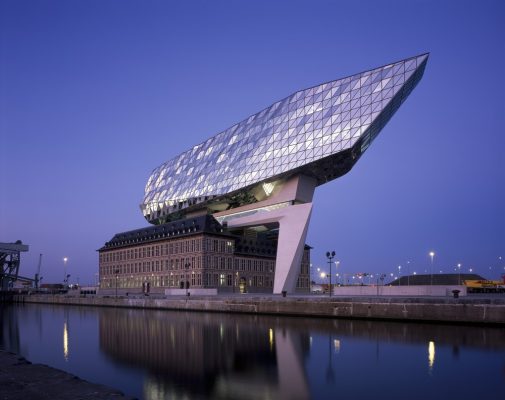
photo © Helene Binet
Recent Architecture in the Belgian Capital
Design: Vincent Callebaut Architectures
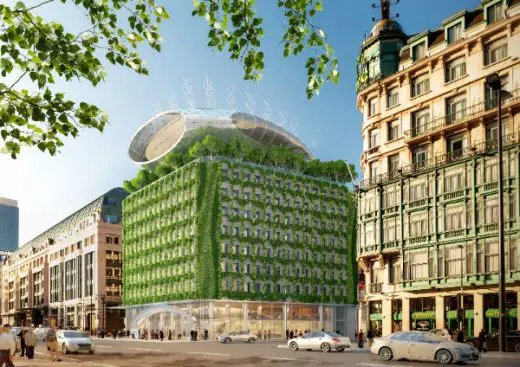
image from architect
Botanic Center Brussels Building
Design: UNStudio, Architects
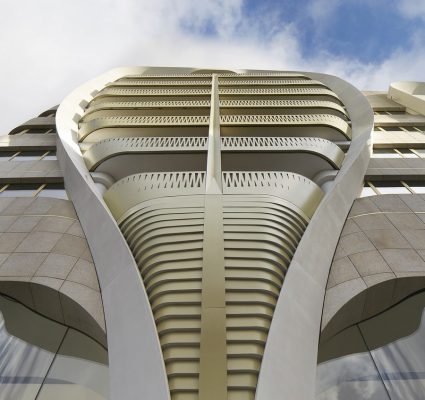
photography © Hufton+Crow © Eva Bloem
Le Toison d’Or Brussels Building
Multisensory Railway Museum
Design: Lightemotion
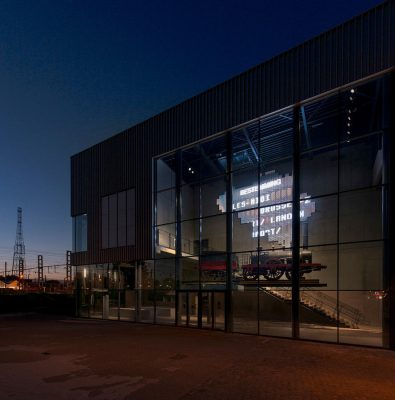
photograph : Marie-Francoise Plissart
Multisensory Railway Museum in Brussels
Schaarbeek Sports Hall, Schaarbeek, north Brussels
Design: O2 Architectes
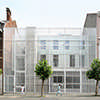
photos : Filip Dujardin
Schaarbeek Sports Hall
Website: Brussels — European Environment Agency (EEA)
Comments / photos for the The Herman Teirlinck Building in Brussels page welcome
Website: Neutelings Riedijk Architects

